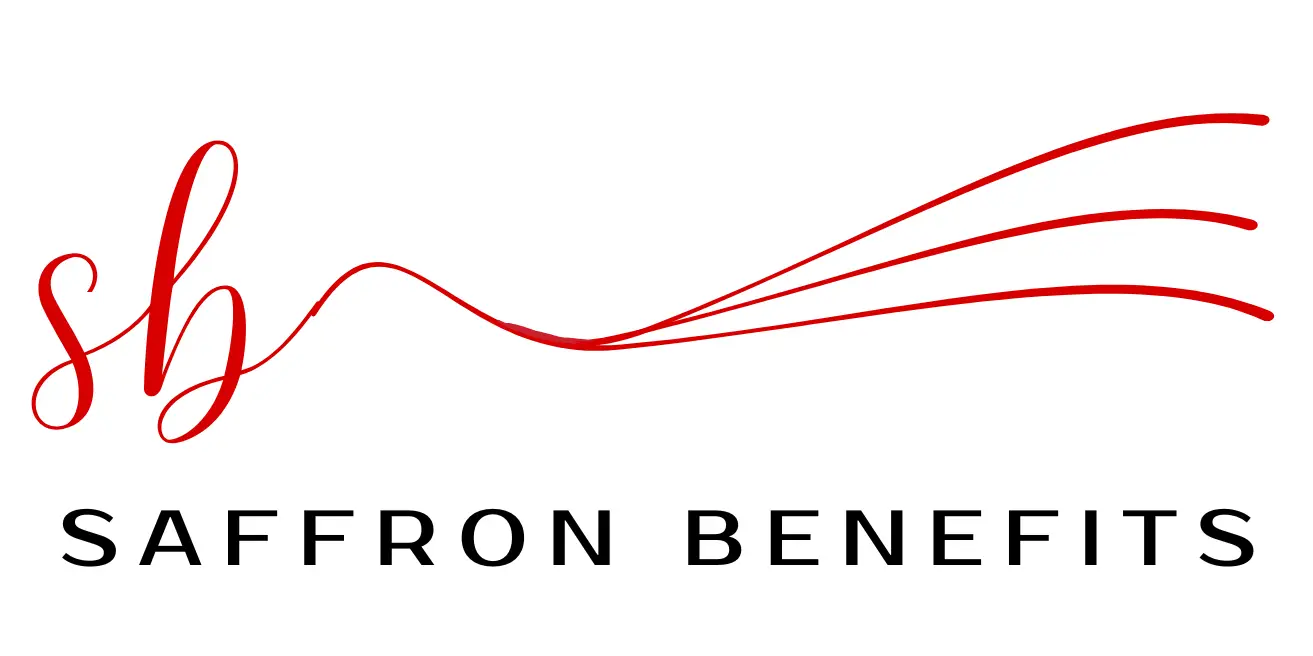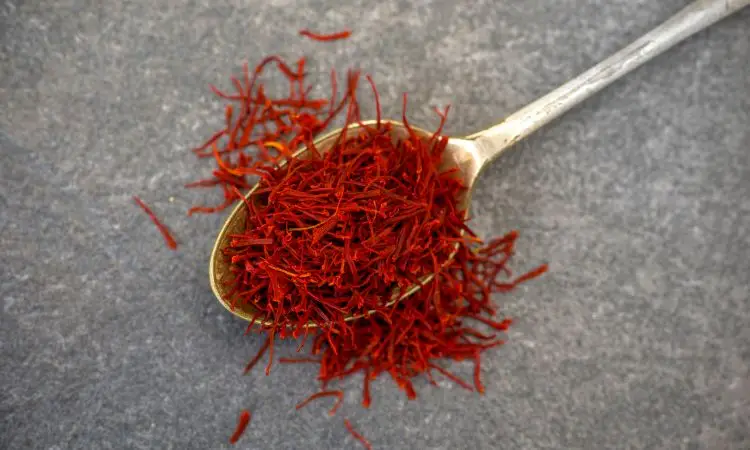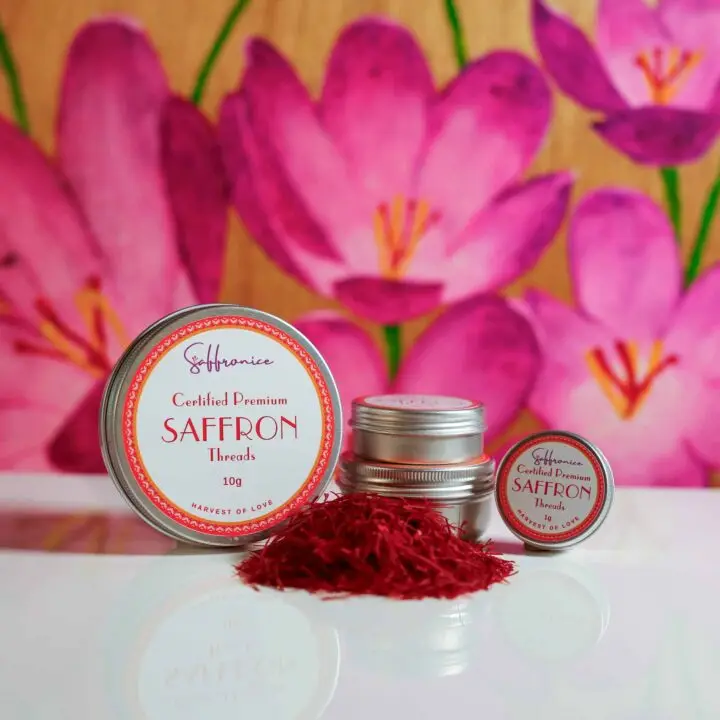📌 Quick Answer: Saffron purity testing uses ISO 3632 standards measuring crocin (color), picrocrocin (flavor), and safranal (aroma) content through HPLC and spectrophotometry. Grade I saffron requires crocin ≥200, picrocrocin ≥70, and safranal ≥20. DNA testing, spectroscopy, and visual inspection help detect adulterants like safflower, synthetic dyes, and contaminants.
Saffron, the world’s most expensive spice by weight, commands premium pricing that, unfortunately, attracts counterfeiters and adulterators seeking to exploit consumers through fraudulent products. Purity testing serves as the critical defense mechanism protecting both consumers and legitimate producers in this high-value market.
The complexity of saffron’s chemical composition, combined with sophisticated adulteration methods, demands comprehensive testing approaches that combine traditional assessment techniques with advanced analytical technologies. Understanding these testing methods empowers consumers, producers, and traders to make informed decisions while maintaining market integrity.
Chef’s Professional Tip: In restaurant kitchens, we conduct basic purity tests on every saffron batch – authentic saffron releases color slowly in warm water while maintaining thread structure, produces complex aroma when crushed, and shows consistent deep red coloration throughout individual threads.
Key Purity Testing Components
- Chemical Analysis: HPLC and spectrophotometry measure crocin, picrocrocin, and safranal content
- Physical Examination: Visual inspection identifies thread structure, color, and foreign materials
- Adulteration Detection: Testing identifies safflower, synthetic dyes, and other substitutes
- Contaminant Screening: Analysis for heavy metals, pesticides, and microbiological safety
- Authentication Methods: DNA testing and spectroscopy confirm species and origin
- Certification Standards: ISO 3632 and regional quality marks ensure compliance
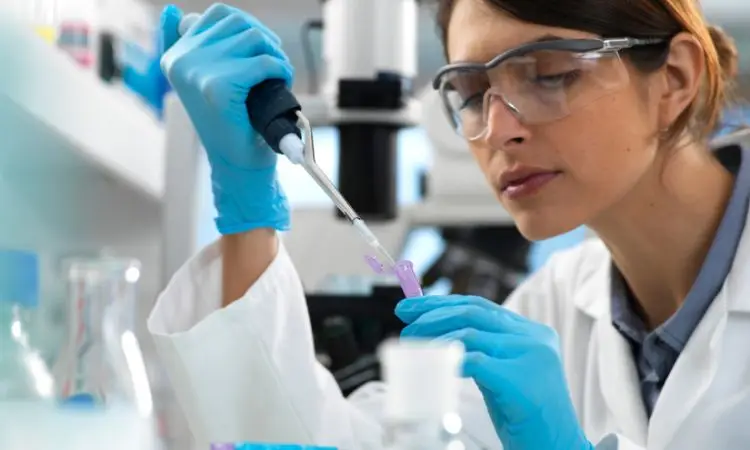
Understanding Saffron Quality Standards: Comprehensive Framework
Effective purity testing requires a thorough understanding of authentic saffron’s characteristics and the quality parameters that define different grades and market categories.
Chemical Composition of Pure Saffron
Authentic saffron’s distinctive properties result from three primary bioactive compounds that serve as the foundation for all purity testing methodologies.
Crocin Compounds: Crocin, the primary carotenoid responsible for saffron’s golden color, typically constitutes 0.5-1.3% of dried saffron by weight. This water-soluble compound includes multiple related structures (crocin-1, crocin-2, crocin-3, crocin-4) that collectively create saffron’s characteristic coloring strength.
Quality Correlation: Higher crocin content directly correlates with superior color intensity and market value, with Grade I saffron requiring a minimum of 200 absorption units at 440nm wavelength.
Stability Factors: Crocin compounds are sensitive to light, heat, and pH changes, making proper storage crucial for maintaining purity and potency over time.
Picrocrocin Content: Picrocrocin, a monoterpene glycoside, provides saffron’s distinctive, slightly bitter taste and represents 2-4% of dried saffron weight. This compound breaks down during drying to form safranal, creating the complex flavor and aroma profile.
Flavor Assessment: Picrocrocin levels above 70 absorption units indicate quality saffron with proper flavor development and processing techniques.
Processing Impact: Proper drying conditions optimize picrocrocin retention while enabling controlled safranal formation through enzymatic breakdown.
Safranal Characteristics: Safranal, a volatile aldehyde responsible for saffron’s distinctive aroma, develops during drying through picrocrocin breakdown. Premium saffron contains 20-50 mg/kg of safranal.
Aroma Evaluation: Safranal concentration directly correlates with aroma intensity, with higher levels indicating proper processing and storage conditions.
Antioxidant Properties: These compounds also contribute to saffron’s therapeutic properties, making purity testing relevant for both culinary and health applications.
Key Quality Indicators and Grading Systems
Professional quality assessment employs standardized criteria that enable consistent evaluation across different origins and processing methods.
Visual Quality Parameters:
- Thread Length: Premium saffron shows 20-30mm thread length with intact trumpet shapes
- Color Uniformity: Deep red threads with minimal yellow or white portions (less than 5% for Grade I)
- Structural Integrity: Threads maintain natural shape without excessive breakage or powdering
- Foreign Matter: High-quality saffron contains minimal debris, dust, or other plant materials
Chemical Quality Requirements:
- Grade I (Superior): Crocin ≥200, Picrocrocin ≥70, Safranal ≥20, Moisture ≤12%
- Grade II (Good): Crocin 170-199, Picrocrocin 55-69, Safranal 15-19, Moisture ≤12%
- Grade III (Standard): Crocin 110-169, Picrocrocin 40-54, Safranal 10-14, Moisture ≤12%
Food Scientist’s Note: The ratio between these three compounds determines not only grade classification but also optimal applications – higher safranal content suits aromatic applications, while high crocin content excels in visual applications requiring intense color.
Importance of Comprehensive Purity Testing
The premium vs. regular saffron market demonstrates why rigorous purity testing is essential for maintaining industry integrity and consumer protection.
Economic Protection and Market Integrity
Consumer Financial Protection: Saffron’s high value ($3,000-8,000/kg retail) makes consumers vulnerable to significant financial losses from counterfeit products. Purity testing prevents consumers from paying premium prices for inferior substitutes or diluted products.
Producer Reputation Management: Legitimate producers invest heavily in quality cultivation and processing. Purity testing protects their market position by differentiating authentic products from counterfeits that damage the overall market reputation.
Trade Relationship Stability: International saffron trade depends on consistent quality standards. Reliable purity testing enables fair pricing, reduces disputes, and supports long-term commercial relationships.
Health and Safety Considerations
Contaminant Prevention: Purity testing identifies harmful adulterants, including toxic dyes, heavy metals, pesticides, and microbiological contamination that pose serious health risks.
Therapeutic Value Verification: Saffron’s health benefits depend on specific compound concentrations. Purity testing ensures therapeutic applications receive products with verified bioactive levels.
Allergen Identification: Testing identifies undisclosed plant materials that may trigger allergic reactions, protecting consumers with known food sensitivities.
Supply Chain Transparency
Origin Verification: Advanced testing methods confirm geographic origin, supporting premium pricing for products from renowned regions like Kashmir, La Mancha, or Khorasan.
Processing Verification: Testing confirms proper harvesting and processing methods that preserve quality while meeting organic, fair trade, or other certification requirements.
Traceability Support: Purity testing provides objective data supporting supply chain tracking from cultivation through retail distribution.
Common Adulterants and Fraud Detection
Understanding adulteration methods enables the development of effective detection strategies and consumer education programs.
Natural Plant Adulterants
Safflower (Carthamus tinctorius): Dried safflower petals are the most common saffron adulterant due to their similar appearance and color. However, safflower lacks saffron’s distinctive chemical compounds and produces different spectroscopic signatures.
Detection Methods: HPLC analysis reveals the absence of crocin, picrocrocin, and safranal. Microscopic examination shows different cellular structures and surface characteristics.
Market Impact: Safflower adulteration can reduce authentic compound concentrations by 30-70%, significantly affecting both culinary performance and therapeutic value.
Calendula and Marigold: These flowers provide orange coloration but lack saffron’s chemical complexity and distinctive aroma profile.
Identification Techniques: UV-Vis spectroscopy shows different absorption patterns, while gas chromatography reveals the absence of safranal and related aromatic compounds.
Turmeric and Paprika: Ground spices mixed with saffron provide color extension but create different flavor profiles and chemical signatures easily detected through standard testing.
Synthetic Adulterants
Artificial Dyes: Food coloring agents (tartrazine, sunset yellow, and allura red) create artificial coloration but lack natural compound complexity.
Detection Approach: Spectroscopic analysis reveals synthetic dye signatures distinct from natural carotenoids. Water tests show immediate color release rather than gradual extraction.
Health Concerns: Some synthetic dyes are banned in certain countries or require labeling, making their undisclosed presence a regulatory violation.
Chemical Enhancers: Synthetic compounds designed to mimic saffron’s properties, including artificial safranal and synthetic crocin derivatives.
Advanced Detection: Mass spectrometry and nuclear magnetic resonance (NMR) identify synthetic compounds through molecular structure analysis.
Environmental Contaminants
Heavy Metals: Lead, mercury, cadmium, and arsenic contamination from polluted soils or processing equipment poses serious health risks.
Testing Requirements: Atomic absorption spectroscopy or inductively coupled plasma mass spectrometry (ICP-MS) measures heavy metal concentrations against regulatory limits.
Pesticide Residues: Agricultural chemicals from cultivation or post-harvest treatment can remain in final products.
Analytical Methods: Gas chromatography-mass spectrometry (GC-MS) identifies and quantifies pesticide residues according to maximum residue limits (MRLs).
Microbiological Contamination: Bacteria, yeast, mold, and mycotoxins can develop during improper storage or processing.
Safety Testing: Microbiological analysis includes total plate counts, pathogen screening, and mycotoxin analysis, ensuring food safety standards.
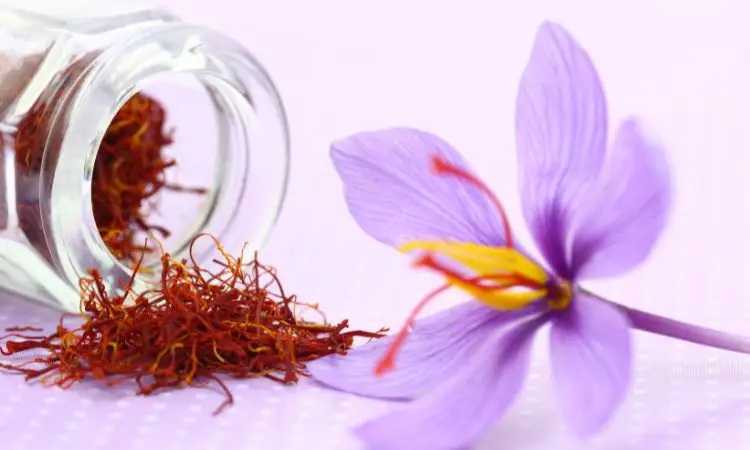
Professional Laboratory Testing Methods
Reputable testing laboratories employ multiple analytical techniques to provide comprehensive purity assessment and quality verification.
High-Performance Liquid Chromatography (HPLC)
HPLC represents the gold standard for saffron purity testing, providing precise quantification of key compounds and adulterant detection.
Methodology: HPLC separates saffron compounds using specialized columns and mobile phases, then quantifies individual components through UV-Vis detection at specific wavelengths (440nm for crocin, 257nm for picrocrocin).
Compound Identification: The method identifies and quantifies crocin-1, crocin-2, picrocrocin, and related compounds while detecting adulterants through retention time comparison with authentic standards.
Quality Assessment: HPLC results provide data for ISO 3632 grade classification and enable comparison with international quality standards.
Adulterant Detection: The technique reveals foreign compounds not naturally present in saffron, including synthetic dyes, plant adulterants, and chemical additives.
Spectrophotometric Analysis
UV-Vis spectrophotometry offers rapid, cost-effective purity assessment suitable for routine quality control and field testing.
Measurement Principles: The method measures light absorption at specific wavelengths (440nm, 330nm, 257nm) corresponding to saffron’s key compounds, with absorption intensity correlating to compound concentration.
Standardized Protocols: ISO 3632 specifies spectrophotometric procedures for measuring crocin content (E₁₍₁ cm₎¹% at 440nm), picrocrocin content (E₁₍₁ cm₎¹% at 257nm), and moisture content.
Rapid Screening: Results available within minutes enable quick quality verification and batch screening before detailed HPLC analysis.
Limitations: Spectrophotometry provides total absorption values but cannot identify specific adulterants or distinguish between different crocin types.
Advanced Analytical Techniques
Gas Chromatography-Mass Spectrometry (GC-MS): GC-MS identifies and quantifies volatile compounds, including safranal, while detecting synthetic aromatic adulterants and contaminants.
DNA Barcoding: Molecular techniques confirm Crocus sativus identity and detect plant adulterants through species-specific genetic markers.
Near-Infrared (NIR) Spectroscopy: Non-destructive analysis provides rapid compositional information suitable for quality control and authentication applications.
Nuclear Magnetic Resonance (NMR): Advanced structural analysis identifies synthetic compounds and provides detailed molecular characterization for research applications.
International Standards and Certification Systems
Global standardization enables consistent quality assessment and fair trade practices while protecting consumers and legitimate producers.
ISO 3632 International Standards
The International Organization for Standardization established comprehensive protocols for saffron quality assessment and classification.
Standard Development: ISO 3632, first published in 1993 and revised in 2011, reflects international consensus on saffron quality parameters and testing methods developed through collaboration between producing and consuming countries.
Testing Protocols: The standard specifies sample preparation methods, extraction procedures, and analytical techniques ensuring reproducible results across different laboratories and regions.
Grade Classifications: Four quality grades (I-IV) based on crocin content (E₁₍₁ cm₎¹% at 440nm), picrocrocin content (E₁₍₁ cm₎¹% at 257nm), safranal content (E₁₍₁ cm₎¹% at 330nm), and moisture content.
Commercial Applications: ISO standards enable objective quality verification, fair pricing, contract specifications, and dispute resolution in international trade.
Regional Quality Systems
Different producing regions have developed complementary certification programs that incorporate local characteristics while maintaining compatibility with international standards.
European Union Standards: EU regulations include specific requirements for saffron import, processing, and labeling, with Protected Designation of Origin (PDO) status for traditional producing regions.
Iranian National Standards: Iran’s Institute of Standards and Industrial Research has established national standards that complement ISO requirements while reflecting local production methods and market needs.
Spanish Quality Marks: Spain’s saffron from the La Mancha region holds PDO protection with specific quality requirements, including traditional harvesting methods and processing techniques.
Indian Certification: Kashmir saffron receives geographic indication (GI) protection with quality standards recognizing its unique characteristics and traditional production methods.
Supply Chain Verification and Traceability
Modern saffron markets require comprehensive traceability systems that track products from cultivation through retail distribution while maintaining quality documentation.
Blockchain Technology Integration
Digital Documentation: Blockchain systems create tamper-proof records of quality testing results, processing methods, and chain of custody information accessible to all stakeholders.
Real-Time Tracking: Smart contracts automatically verify quality certifications and testing compliance at each supply chain stage, reducing fraud opportunities.
Consumer Access: QR codes on retail packaging link to blockchain records showing origin, quality testing results, and supply chain history, building consumer confidence.
Global Production Monitoring
Origin Verification: Advanced testing methods, including isotope ratio analysis and elemental profiling, confirm geographic origin claims supporting premium pricing for renowned regions.
Processing Verification: Supply chain monitoring ensures compliance with organic farming standards, fair trade requirements, and traditional processing methods.
Quality Consistency: Continuous monitoring throughout the supply chain identifies quality variations and enables corrective actions before products reach consumers.
Consumer Guidelines for Quality Assessment
Practical methods enable consumers to perform basic purity assessment while making informed purchasing decisions.
Visual Inspection Techniques
Thread Examination: Authentic saffron displays deep red threads with trumpet-shaped stigma ends, natural size variation, and minimal white or yellow portions. Uniform size or perfect coloration may indicate machine processing or artificial treatment.
Color Assessment: Quality saffron shows consistent deep red coloration throughout individual threads, with natural variation between threads indicating hand-harvesting and authentic processing.
Structure Analysis: Genuine threads maintain flexibility without excessive brittleness, show natural plant texture rather than artificial smoothness, and resist breaking when gently handled.
Simple Home Testing Methods
Water Test Protocol: Place 0.1g saffron in 100 mL of warm water and observe color development. Authentic saffron releases golden color gradually over 10-15 minutes while maintaining its thread structure.
Aroma Assessment: Crush several threads between fingers to release aromatic compounds. Genuine saffron produces an immediate, complex fragrance combining sweet, hay-like, and slightly metallic notes.
Color Release Pattern: Quality saffron provides steady color release without immediate color burst (synthetic dyes) or minimal color development (old or adulterated products).
Purchasing Guidelines
Vendor Assessment: Reputable suppliers provide quality certificates, testing results, origin documentation, and storage recommendations. Avoid vendors unable to provide quality verification or offering unrealistic pricing.
Certification Verification: Look for ISO 3632 compliance, organic certifications, fair trade marks, or regional quality designations that indicate third-party verification and quality assurance.
Price Reality Check: Authentic saffron costs $15-150 per gram retail. Prices below $5 per gram typically indicate counterfeits, adulterants, or very low quality that won’t provide expected culinary or therapeutic benefits.
Storage and Preservation for Purity Maintenance
Proper storage methods maintain saffron purity and prevent quality degradation that could affect testing results and product performance.
Optimal Storage Conditions
Environmental Control: Store saffron at stable temperatures (10-20°C), low humidity (below 50%), and complete darkness to prevent compound degradation and maintain purity.
Container Selection: Use airtight, opaque containers that prevent light exposure and moisture absorption while minimizing air contact that causes oxidation.
Contamination Prevention: Avoid storage near strong-smelling substances, chemicals, or other spices that could cause cross-contamination affecting purity testing results.
Culinary Applications and Quality Impact
Understanding how purity affects culinary performance helps consumers appreciate the value of rigorous testing and quality verification.
Performance Correlation
Color Development: Pure saffron with high crocin content provides superior coloring strength, requiring smaller quantities to achieve the desired visual impact in dishes.
Flavor Contribution: Authentic picrocrocin and safranal content create complex flavor profiles that enhance rather than overwhelm other ingredients.
Consistency Assurance: Quality-tested saffron delivers predictable results, enabling recipe standardization and consistent culinary outcomes.
Understanding saffron purity testing empowers all stakeholders in the saffron supply chain to make informed decisions, protect investments, and maintain the integrity of this precious spice. From traditional knowledge to modern analytical techniques, comprehensive testing ensures that saffron continues to deserve its reputation as culinary gold.
Frequently Asked Questions
What are the main methods used for saffron purity testing? Primary methods include HPLC analysis for compound quantification, UV-Vis spectrophotometry for rapid screening, microscopic examination for physical assessment, and DNA testing for species verification. ISO 3632 standards define specific protocols for consistent testing across laboratories.
How can consumers identify pure saffron without laboratory testing? Visual inspection (deep red threads with trumpet shapes), aroma assessment (complex, sweet-hay fragrance when crushed), water tests (gradual golden color release), and purchasing from certified suppliers with quality documentation provide reliable purity indicators.
What are the most common saffron adulterants, and how are they detected? Common adulterants include safflower petals, synthetic dyes, turmeric, and calendula. Detection uses HPLC to identify missing authentic compounds, spectroscopy to reveal foreign substances, and microscopic examination to identify different plant materials.
What do ISO 3632 standards require for different saffron grades? Grade I requires crocin ≥200, picrocrocin ≥70, safranal ≥20, and moisture ≤12%. Grade II needs crocin 170-199, picrocrocin 55-69, safranal 15-19. Grade III requires crocin 110-169, picrocrocin 40-54, and safranal 10-14. All measurements use standardized absorption units.
Why is saffron purity testing important for health and safety? Testing identifies toxic adulterants (synthetic dyes, heavy metals), verifies therapeutic compound concentrations for health applications, detects allergens and contaminants, and ensures products meet food safety regulations protecting consumer health.
How does supply chain traceability support saffron purity verification? Blockchain technology creates tamper-proof quality records, origin verification confirms geographic claims, processing documentation ensures compliance with standards, and continuous monitoring identifies quality issues before products reach consumers.
